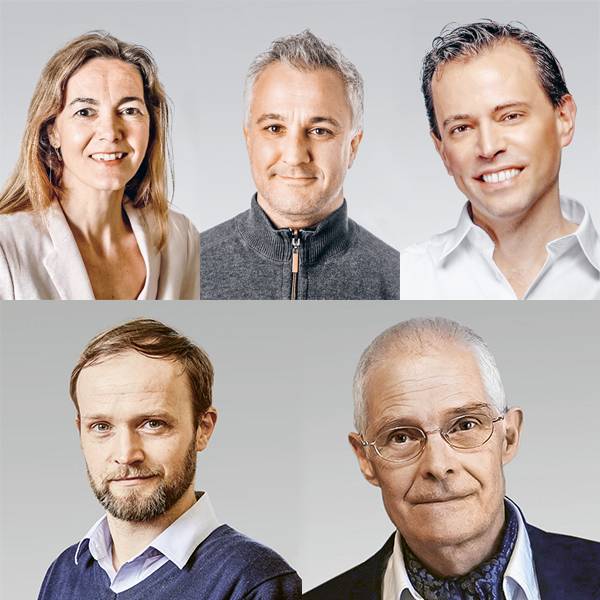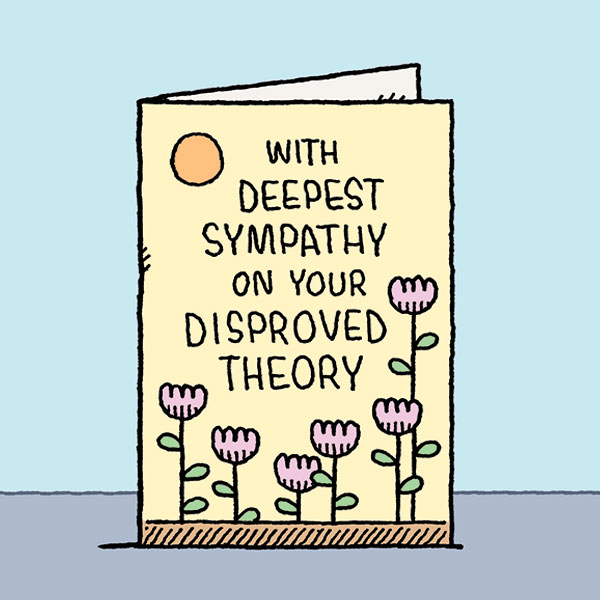Feature: In virtual space
The boundaries of an infinite expanse
For more than a year now, we’ve spent more time in virtual spaces than ever before. Mostly involuntarily. What does this do to us? And what opportunities do today’s digital solutions offer us?

Whether surreally beautiful landscapes or a spider’s web – in virtual spaces you can create everything imaginable in 3D. | Image: Alexis Christodoulou
The recent months have made it clear that we can also make binding decisions with others, even if one of us is sitting in Stäfa by the Lake of Zurich, and our partner in San Jose. We have also learnt that we can develop affection for others, even if our screen freezes now and then. Of course we all yearn to get back our everyday life with its everyday, personal encounters. But just how strong these yearnings are depends on our personality and our working situation, says Dominique de Quervain, a professor of cognitive neurosciences at the University of Basel. Since the beginning of the Coronavirus crisis, he has conducted several surveys about how Swiss citizens are coping in these times of ours. However, he is unable to determine whether the many hours we have spent working from home have had a specific impact on our mental health. “Some people feel comfier in the isolation of their attic than in an open-plan office”, says de Quervain. “While for others, the lack of social contact is a major burden”.
One sociologist who is researching into digital alienation and work acquisition at the University of Basel is Helene Thaa. In the interviews that she has been conducting, she has found that the physical distance from our work generally has no adverse impact on our conviction that we are making a positive contribution. “However, the people who confirmed this were largely experts who are in demand, such as computer programmers or professionals in project and change management who can negotiate good conditions for themselves and can work in a self-determined way.
Seeing one’s own face for hours on end
At first glance, holding work meetings online might not seem so different from holding them in person. But anyone who spends many hours a day in video conferences might well be of a different opinion. Meanwhile, a name for the weariness that this new reality has brought with it has even become established: ‘Zoom fatigue’. Jeremy Bailenson is a professor in communication sciences and is the founder of the Virtual Human Interaction Lab at the University of Stanford. He has published a list of the possible grounds for this new form of fatigue in an article in the journal ‘Technology, Mind and Behavior’. First, we communicate with everyone on Zoom (and its peers) in a manner that is usually reserved for those closest to us. The faces on the screen come much too close to us, and their gaze remains on us for too long. Bailenson compares this with a crowded subway train in which all our fellow travellers stare at us uninterruptedly. We would automatically avert our gaze.
Secondly: in personal encounters, we send and receive many nonverbal signals, usually effortlessly and without being conscious of it. Online, however, we can’t tell from someone’s body language or movement whether or not they agree with us. Other signals then become more important: their speech, facial expressions and gestures. In videochats, for example, people speak louder and nod more insistently, says Bailenson. What’s more, many nonverbal signals have a different meaning when we meet in person. For example, when a colleague gives a long, sideways glance on Zoom, we initially assume that they want to communicate something silently to the face in the window beside them. In fact, they are probably simply looking up an appointment in their online calendar. Of course we know about such automatic reactions. But it costs energy when we have to keep adjusting our initial impressions in order to cope with the new medium.
“Solidarity in a class emerges much slower if you only know each other online”.
Cornelia DiethelmThirdly, we find ourselves far more often in situations that used to be the preserve of ballet dancers or the owners of halls of mirrors: we see our faces reflected for hours every day. Bailenson believes that this can lead to constant self-criticism and stress. And finally: online meetings don’t just prevent us from going on extended walks; they also prevent us from any kind of physical activity. During any personal conversation or a telephone call, we get a lot done on the side: we stretch our backs a little, or start boiling the water to make pasta for lunch – all without suffering any lapse in concentration. Bailenson maintains that any physical movement – even if it just means a few steps in a conference room – helps us to achieve more, and we have more creative ideas than someone who is just seated the whole time.
“It’s not enough to sit in front of your screen with a glass of champagne”.Klaus Marek
One’s company?
Essentially, it seems to be easier to cultivate existing relationships online than to make new ones. Anke Maatz, a senior physician at the Psychiatric University Hospital of Zurich, conducted a survey of just under 180 psychiatrists in Zurich. The majority said that psychotherapeutic conversations can easily be shifted to a virtual setting on a temporary basis. “But that was only if the therapeutic relationship had already been established”, she says. Currently, Maatz and several colleagues from the fields of psychology and interactional linguistics are investigating the importance of physical presence for psychotherapy. “Most of those surveyed regarded virtual conversations as inappropriate for a first session”, she says. Cornelia Diethelm is the head of digital ethics at the University of Applied Sciences for Business Administration in Zurich. She also believes that “something along the lines of solidarity in a class emerges much slower if you only know each other online. For a relatively long time, learners remain merely individuals who come online for classes, and are then gone again afterwards”.
That’s why attempts to conjure up any kind of ‘party mood’ online are clumsy. “It’s not enough to sit in front of your screen with a glass of champagne”, says Klaus Marek, the head of spatial design in the Department for Design & Art at the University of Lucerne, whose job it is to decide how to design physical and virtual rooms in which we can feel comfortable. It’s usually the host who decides who should meet whom in virtual network offerings such as ‘breakout rooms’. Programs such as Gather Town would be more suitable, says Marek, because everyone there also gets a small avatar that can be drawn into different, individually organised environments. It can also help one to get an intuitive sense of orientation in a space if the voices of the other participants get softer or louder, depending on how far one is from them.
“In a virtual environment, a stimulus can be presented in a way that does not overtax those with phobias”.
Dominique de QuervainNevertheless, even the best online tools can’t replace urban green spaces, the banks of a lake, tram stops, staircases, a nightclub or the checkout at the local supermarket. The Internet lacks the intermediary spaces that enable chance encounters – a public space that does not prescribe which people we are to meet and how. Even seemingly trivial contacts can heighten our sense of wellbeing, and might well play a part in providing societal cohesion. A few years ago, the Canadian psychologists Gillian Sandstrom and Elizabeth Dunn conducted an experiment proving that men and women in a café who chatted briefly with their barista before walking away with their cappuccino were in a much better mood when they left than those who simply ordered their coffee and took it. A feeling of belonging seems to contribute to our degree of contentment.
The real fear of the virtual abyss
But conversely, we can also visit places virtually that remain closed off to us in real life because they no longer exist, because they perhaps never existed in the first place, because they are too dangerous, or because it would be inadvisable to go there. Virtual reality enables us to walk on Mars and to stroll through a slaughterhouse. Klaus Marek believes that it offers great opportunities to museums. Virtual guided tours could make delicate artefacts accessible to a broad public without risking damage to them. Ruins can come together to become whole cities again. But such experiences also have their limits. Since 2017, an Italian studio has been offering a virtual experience of the horrors of a concentration camp using VR glasses. This naturally prompted an intense debate, because it would be obscene to imagine that anyone could use virtual reality to comprehend the suffering of those who were actually there, as observed by Thilo Hagendorff, an expert in media ethics at the University of Tübingen: “You would be constantly aware that you only need to take off the glasses, and the horrors are at an end”.
But some things that we feel in virtual realms can be real, too. Already back in 2002, a research team at the University of North Carolina found that if someone is perched on the edge of a long, virtual drop, it sets their heart racing. And sometimes the things we experience virtually can echo on in our real lives, as shown by a study from the University of Barcelona in 2013: White, female test subjects who were given black avatars in a virtual space were found to be less susceptible to prejudice afterwards. In recent years, de Quervain has developed several VR apps to aid the treatment of different phobias. “Although conventional confrontation therapy is supposed to be highly efficacious, it is rarely used in everyday life”, he says. It’s not easy for a therapist to procure a few bird spiders, or to organise a full audience in a seminar room. What’s more, phobics need to make a major effort before they are prepared to venture willingly into a situation that they would normally avoid at any price. “In a virtual environment, however, such a stimulus can be presented in a way that does not overtax the patient”.
The pandemic has been a catalyst for online meetings and working from home, and has served to sweep away many misgivings. “The past months have heightened our awareness of those situations where our physical presence is really decisive, and where we can easily do without it”, says Diethelm. “In future, we are going to have to do a lot more to convince people that we absolutely have to attend a conference in person, just because we’re giving a paper”. At the same time, it’s become clear that coffee breaks aren’t just a waste of time. And we can confidently state that some new habits will be subject to critical questioning too. Just because we need to discuss something with a person who’s far away doesn’t mean we have to hold a video meeting. Sometimes, a phone call or an e-mail will suffice.
Despite all the adjustments that we have made in order to navigate our way through virtual auditoriums and attics: those of us who are compelled to watch ourselves on our screens for hours every day remain a relatively modest proportion of the general population. The majority of people – bus drivers, nurses and supermarket checkout staff – all continue to spend their everyday working lives in the physical world.




